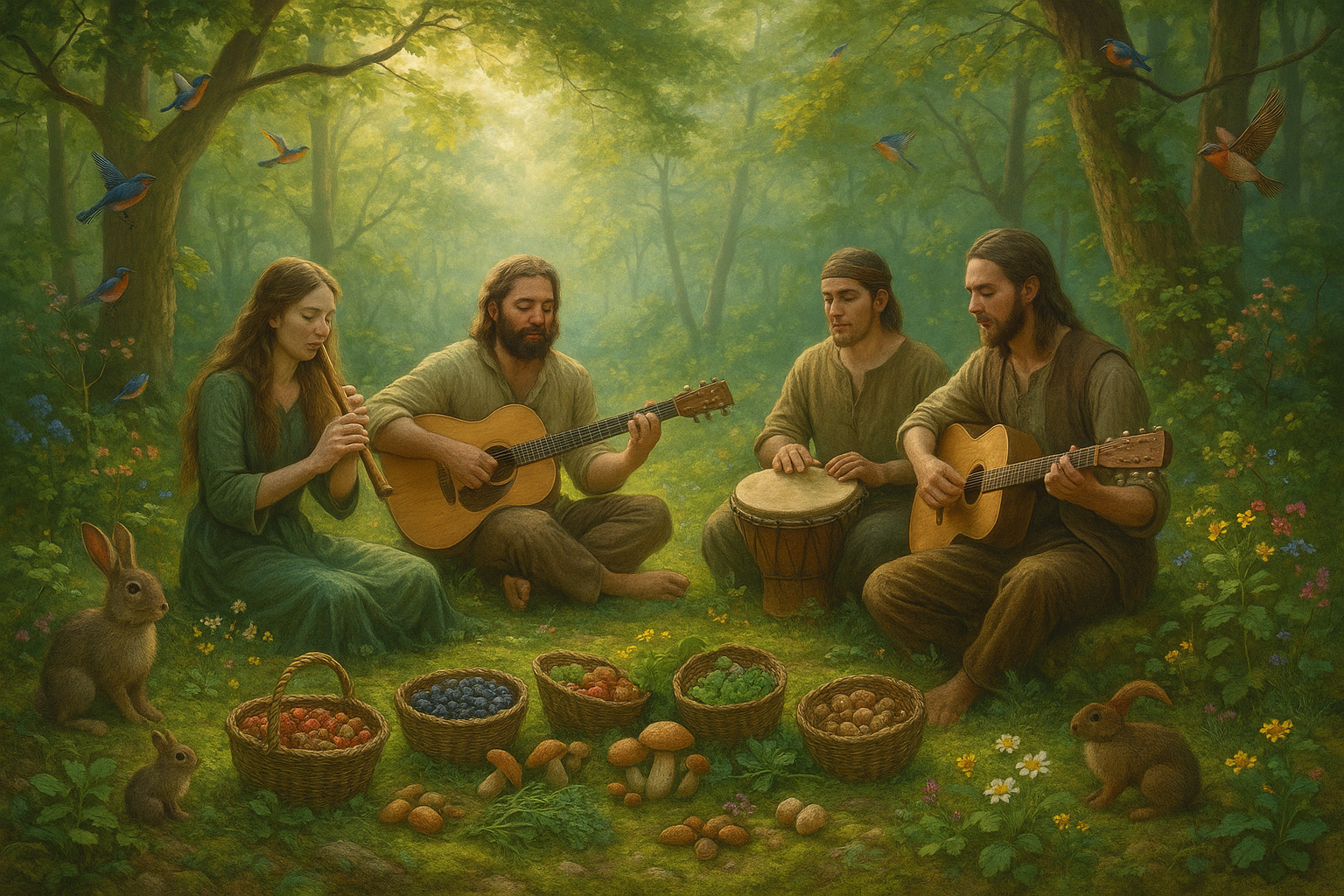In the digital age, where technology evolves at a breathtaking pace, we find ourselves surrounded by an ocean of data. Each click, stream, and download contributes to an ever-expanding universe of information, with audio content claiming a significant share. As music, podcasts, and audiobooks continue to thrive, the demand for efficient and sustainable audio storage solutions has never been more critical. But as we stand on the precipice of a new era in digital storage, a question looms large: how can we ensure that our audio storage practices align with the urgent need for environmental sustainability? 🌍
Welcome to “Echoing Sustainability: The Future of Audio Storage Solutions,” where we embark on a journey to explore the intersection of audio technology and ecological responsibility. This article delves into the innovative approaches being developed to ensure that our audio storage methods not only meet the growing demands for quality and accessibility but also contribute to a healthier planet. By examining the latest trends, groundbreaking technologies, and forward-thinking strategies, we aim to illuminate the path towards a future where audio storage is both efficient and eco-friendly.
At the heart of our discussion lies the pressing issue of energy consumption. Traditional data centers, which house vast amounts of digital audio, are notorious for their energy-intensive operations. We will explore how cutting-edge technologies such as solid-state drives (SSDs) and energy-efficient server designs are revolutionizing the way we store audio files, significantly reducing the carbon footprint of digital storage. Additionally, we will examine how cloud-based solutions are paving the way for more sustainable practices by optimizing resource use and enabling smarter energy management.
Another critical aspect of sustainable audio storage is the materials used in the manufacturing of storage devices. As the world becomes more conscious of the environmental impact of e-waste, there is a growing push for the development of eco-friendly materials and recycling processes. In this article, we will highlight the efforts of companies that are leading the charge in creating storage solutions that minimize environmental impact, from utilizing biodegradable materials to implementing comprehensive recycling programs.
Finally, we will address the role of innovative software solutions in enhancing the sustainability of audio storage. By leveraging artificial intelligence and machine learning, companies are developing smarter algorithms that not only improve the efficiency of storage systems but also predict and adapt to user needs in real-time. These advancements promise to optimize storage usage, reduce unnecessary data duplication, and ultimately contribute to a more sustainable digital ecosystem.
Join us as we unravel the complexities and opportunities of sustainable audio storage solutions. As we venture into this dynamic landscape, we invite you to consider the impact of your digital footprint and explore how we can collectively contribute to a more sustainable future. Together, let us echo a commitment to innovation that respects the planet, ensuring that the music of tomorrow is stored in harmony with the Earth. 🎵

Conclusion
**Conclusion: Echoing Sustainability: The Future of Audio Storage Solutions**
As we navigate the intricacies of the digital era, the subject of sustainable audio storage solutions has emerged as not only relevant but crucial. Throughout this article, we have delved into the multifaceted challenges and innovative pathways that are shaping the future of audio storage. By recapitulating the significant points discussed, we aim to inspire and encourage further action and engagement from you, our readers.
Firstly, the environmental impact of traditional storage solutions cannot be overstated. The rapid expansion of digital media, including audio files, has precipitated an unprecedented demand for data storage. This demand translates into a growing carbon footprint, primarily due to the energy consumption and material waste associated with data centers and physical storage media. The realization that our digital habits contribute to environmental degradation has catalyzed the search for greener alternatives.
In addressing these challenges, we explored various innovative approaches that promise to transform the landscape of audio storage. One of the most promising developments is the advent of DNA data storage. This cutting-edge technology, which encodes binary data into the genetic language of DNA, offers staggering data density and long-term stability. By mimicking nature’s way of storing information, DNA storage represents a leap forward in reducing the physical footprint of data centers.
Furthermore, cloud storage solutions continue to evolve, offering more sustainable and efficient ways to manage audio data. The shift towards renewable energy sources by major cloud service providers is a promising step in mitigating the environmental impact of massive data storage facilities. Companies like Google and Microsoft have set ambitious goals to power their data centers with 100% renewable energy, signaling a significant move towards sustainability in the tech industry.
Another exciting development is the use of advanced compression algorithms and artificial intelligence to optimize storage needs. By reducing file sizes without compromising quality, these technologies can decrease the energy required for data storage and transmission. This innovation not only contributes to sustainability but also enhances accessibility, making high-quality audio more widely available at a lower environmental cost.
Moreover, the role of consumer awareness and responsibility cannot be overlooked. As end-users, our choices have a profound impact on the demand for sustainable audio storage solutions. By opting for services and products that prioritize environmental responsibility, we can collectively drive the market towards greener practices. This consumer-driven change is crucial for the widespread adoption of sustainable technologies.
In conclusion, the future of audio storage solutions hinges on our ability to balance technological advancement with environmental stewardship. As we have seen, there are viable pathways to achieve this balance, from revolutionary technologies like DNA data storage to the optimization of existing cloud solutions. However, the success of these initiatives depends largely on our collective commitment to sustainability.
We encourage you, our readers, to reflect on the information shared and consider how you can contribute to this global effort. Whether it’s by choosing eco-friendly storage options, supporting companies that prioritize sustainability, or simply spreading awareness, your actions matter.
The journey towards sustainable audio storage is ongoing, and your engagement is vital. We invite you to share your thoughts and experiences in the comments section below. Let’s continue this important conversation and work together to echo sustainability in every byte of audio stored. Together, we can ensure that the soundtrack of our future is not only innovative but also environmentally sound. 🌿
For further reading on this topic, consider exploring these resources:
1. [DNA Storage: The Future of Data](https://www.nature.com/articles/d41586-019-00939-5)
2. [Cloud Computing and Sustainability](https://www.greenpeace.org/international/story/42281/green-internet-cloud-computing/)
3. [Artificial Intelligence and Data Optimization](https://www.ibm.com/cloud/learn/what-is-ai)
Thank you for being a part of this essential dialogue. Share this article, apply what you’ve learned, and let’s make a positive impact together! 🌍
Toni Santos is a sensory storyteller and soundscape artisan whose work explores the forgotten language of the Earth through acoustic ecology storytelling. With a deep reverence for the natural world’s sonic textures, Toni crafts narratives that awaken our ears to the subtle music of forests, winds, waters, and wild silence.
His creative journey is rooted in a desire to preserve and interpret the acoustic heritage of environments, both ancient and fragile. From the echo of birdsong in a disappearing jungle to the resonance of stones in sacred landscapes, Toni’s stories reflect the memory held in sound—often overlooked, yet deeply felt.
With a background in environmental aesthetics and sonic design, Toni blends field recordings, visual symbolism, and poetic insight to create immersive experiences that honor the sonic soul of nature. His work does more than document; it invites listeners to re-tune themselves to the rhythms of life that still pulse beneath modern noise.
As the voice behind Vizovex, Toni shares sound-based studies, ambient narratives, and reflective content that help others reconnect with how sound shapes memory, meaning, and place.
His work is a tribute to:
The lost soundscapes of vanishing ecosystems
The role of natural acoustics in cultural and emotional memory
The healing potential of listening deeply to the world
Whether you’re an artist, an ecologist, or someone drawn to the quiet power of listening, Toni invites you into a space where every rustle, ripple, and resonance becomes a story—one note, one place, one heartbeat at a time.





